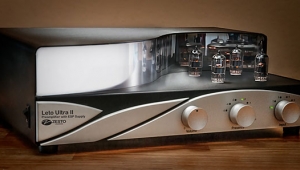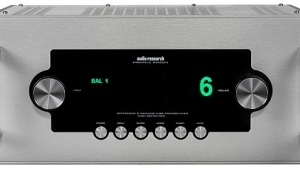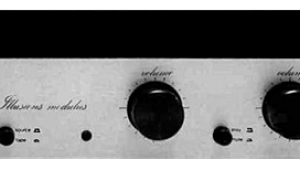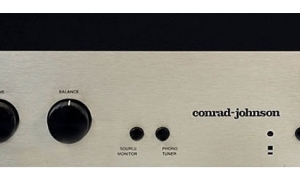| Columns Retired Columns & Blogs |
Balanced Audio Technology VK-5 preamplifier & VK-60/75 power amplifiers VK-5 Measurements
Sidebar 2: VK-5 Measurements
Without any cathode follower, the VK-5's output impedance at its line outputs measured about 1.1k ohms. This is relatively high for a modern preamp, and reasonable care should be exercised in matching it with a suitable power amp. I recommend that the latter have a minimum input impedance of 20k ohms—not really a difficult condition to meet.
The input impedance of the VK-5 was very difficult to measure properly, due both to its being very high, and to small fluctuations in the readings, which are fairly typical of tube electronics. The lowest value I obtained, however, was just over 200k ohms, which should not cause any problems whatsoever in system matching. The output impedance at the tape output was just over 2k ohms with a source impedance of 50 ohms, and just under 2.6k ohms with a source impedance of 600 ohms, indicating a tape output which is not actively buffered. Using a tape deck that has an unusually low input impedance could affect the preamp's performance. (You must also consider its input impedance when turned off, if it will remain attached to the tape outputs of the preamp at all times.) Incidentally, most users will have to use balanced-to-unbalanced adapters with the VK-5's tape outputs, as very few consumer tape decks (actually, none that I know of) have balanced inputs.
The DC offset at the VK-5's outputs fluctuated wildly, reaching maximum values of nearly 200mV—though only instantaneously. Nevertheless, I don't recommend using this preamp with a DC-coupled power amp (tube amplifiers with output transformers should present no difficulty). Pin 2 of the inputs and outputs is configured as positive, pin 3 as negative; the preamp will be non-inverting if used with associated equipment using the same convention. The preamp's maximum gain was 18.9dB. Its S/N (ref. 1V out) measured 78.8dB over a 22Hz-22kHz bandwidth unweighted, and 81.1dB over a 10Hz-500kHz bandwidth A-weighted.
The frequency response of the VK-5 is shown in fig.10. At or below unity gain, the high-frequency response is very flat; above unity gain, an audibly insignificant rise develops at very high frequencies. Volume-control tracking was fair to good by the standards of the best preamps. Note that although the right channel remains within -0.5dB of the left in the two curves shown, it's +0.5dB in one set of curves and -0.5dB in the other—a shift which may result in a marginally audible balance shift for listeners in the "sweet spot" of a well-set-up system.

Fig.10 BAT VK-5, balanced frequency response (from top to bottom): with volume control set to maximum, right channel; maximum gain, left channel; with volume control set to unity gain, left channel; unity gain, right channel (0.5dB/vertical div.).
The crosstalk shown in fig.11 is good, with the expected increase at high frequencies (usually the result of capacitive coupling between the channels).
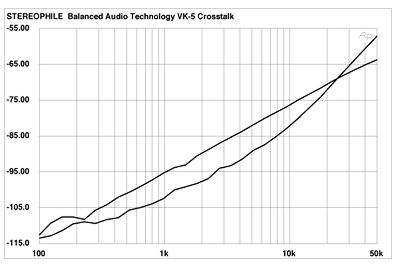
Fig.11 BAT VK-5, crosstalk, from top to bottom at 1kHz: R-L, L-R (10dB/vertical div.).
The THD+noise vs frequency performance for the VK-5 is shown in fig.12. (The input level was 230mV.) The distortion is very low across the full range, overall an excellent result. Fig.13 shows the VK-5's output spectrum with the preamp reproducing 50Hz at a very high output of 5V. The largest artifact, at 100Hz, is approximately 70dB down (0.03% distortion). At a more typical 2V output (not shown), this figure improves by about 7dB.
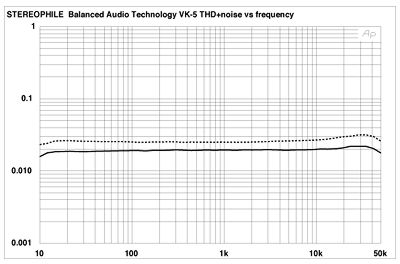
Fig.12 BAT VK-5, THD+noise vs frequency into 100k ohms at 230mV (right channel dashed).
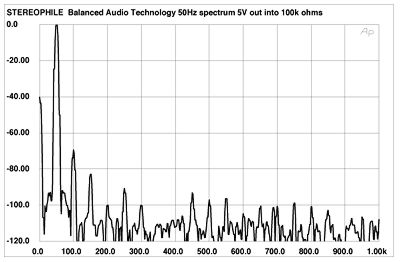
Fig.13 BAT VK-5 line stage, spectrum of 50Hz sinewave, DC-1kHz, at 5V output into 100k ohms (linear frequency scale). Note that the second harmonic at 100Hz is the highest in level, at -70dB.
The THD+noise vs output voltage curve is shown in fig.14. The minimum distortion occurs at 2V output, which corresponds to an input of 230mV—the latter value used for the THD+noise vs frequency and crosstalk measurements (the increase in THD+noise below this input level is primarily due to noise).
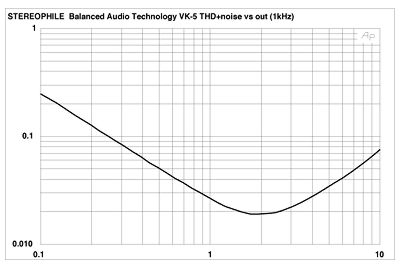
Fig.14 BAT VK-5, THD+noise (%) vs output voltage into 100k ohms.
Finally, the VK-5 would accept a balanced line-level input of 3.5V before reaching 1% THD+noise (with a resulting balanced output of 30.3).
Good tube preamps tend to produce more impressive measured results than tube power amps, and the VK-5 was no exception. My only concern is the slightly high output impedance, a characteristic which can be overcome by reasonable care in system matching.—Thomas J. Norton
- Log in or register to post comments







